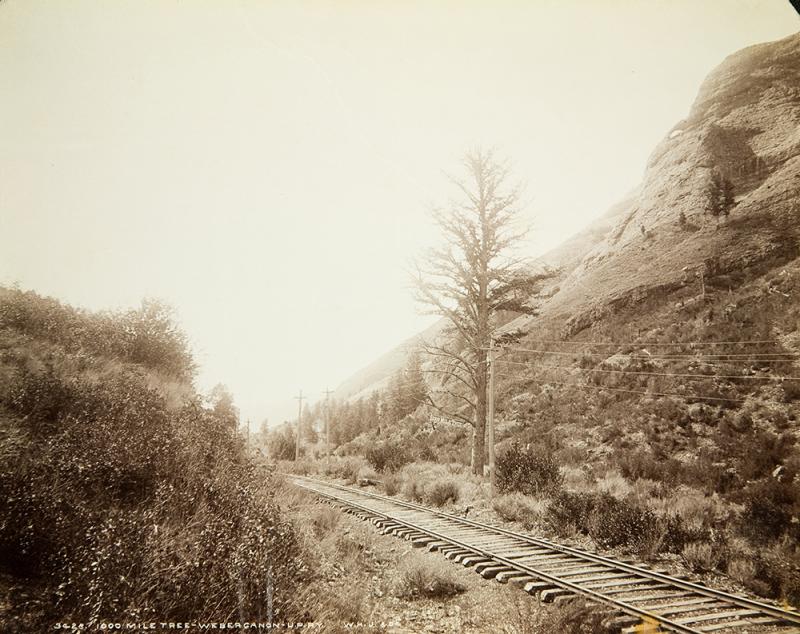William Henry JACKSON
American, 1843-1942
-
Over a thousand years ago, the Ute peoples established a trail to connect their prairie and mountain lands. The state of Utah is named for this living indigenous group, whose ancestral borders stretch between what is now Colorado, Utah, and parts of Wyoming, Kansas, Oklahoma, Texas, New Mexico, Arizona, and Nevada.
-
Can an image be both hopeful and painful? Consider how photographs can represent different viewpoints. What might this image of a road symbolize for a European settler versus an indigenous person?
-
William Henry Jackson was hired by the Union Pacific Railway in the 1860s to photograph their expanding routes and encourage European-born citizens to migrate west. Like many photographers in the late 19th century, Jackson later joined a governmental survey of the Yellowstone River and Rocky Mountains to document the "new" territories with "dry plate" photographic processes such as collodion or albumen.
-
In the 19th century, the United States government began establishing “reservations” to forcefully remove Indigenous peoples from the growing European settler populations. The Ute tribe was first separated by Abraham Lincoln's 1861 Executive Order to create the Uintah Valley Reservation, followed by numerous legislative acts that established the Uintah-Ouray, Southern Ute, and Ute Mountain reservations.
-
The Union Pacific Railroad was launched in 1862 as the first transcontinental railroad to connect Council Bluffs, Iowa with Sacramento, California. It was largely constructed by immigrant Irish laborers who learned railroad construction during the Civil War.
-
The 1,000 Mile Tree marks the location where workers achieved exactly one thousand miles of railroad in 1869. Located in Weber Canyon between Henefer and Morgan, Utah, the site continues to be a landmark of American westward expansion.
-
William Henry Jackson captured the original tree in this photograph, which died in 1900. A new pine tree was planted in 1982 and now stands at over 30 feet tall.
- In 1886, a coal mine opened in Carbon County, Utah that intersected with the Denver and Rio Grande Western Railroad. The town of Castle Gate, named for the rock formations that frame its approach, was established to support the mining activities.
- Castle Gate was the location of a dramatic robbery by "Old West" outlaws Butch Cassidy (1866-1908) and Elzy Lay (1869-1934) in 1897, when $8,800 in payroll was stolen.
- An explosion in 1924 killed all 171 workers at the site, who were largely Greek, Italian, British, Japanese, and Austrian immigrants. It is still the tenth deadliest coal mining disaster in American history. Castle Gate is now a ghost town – one of many former mining communities in the American West that were abandoned in the early 20th century.
- What do you think this landscape looks like today? In 100 years?



